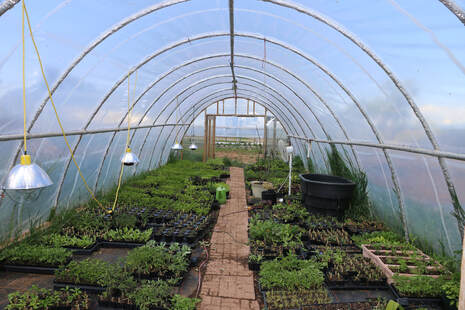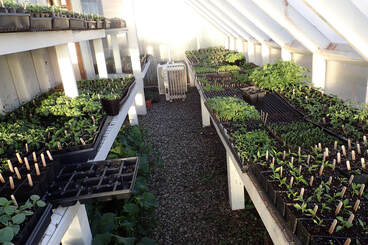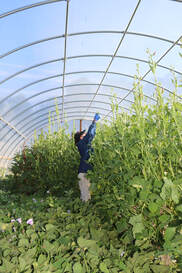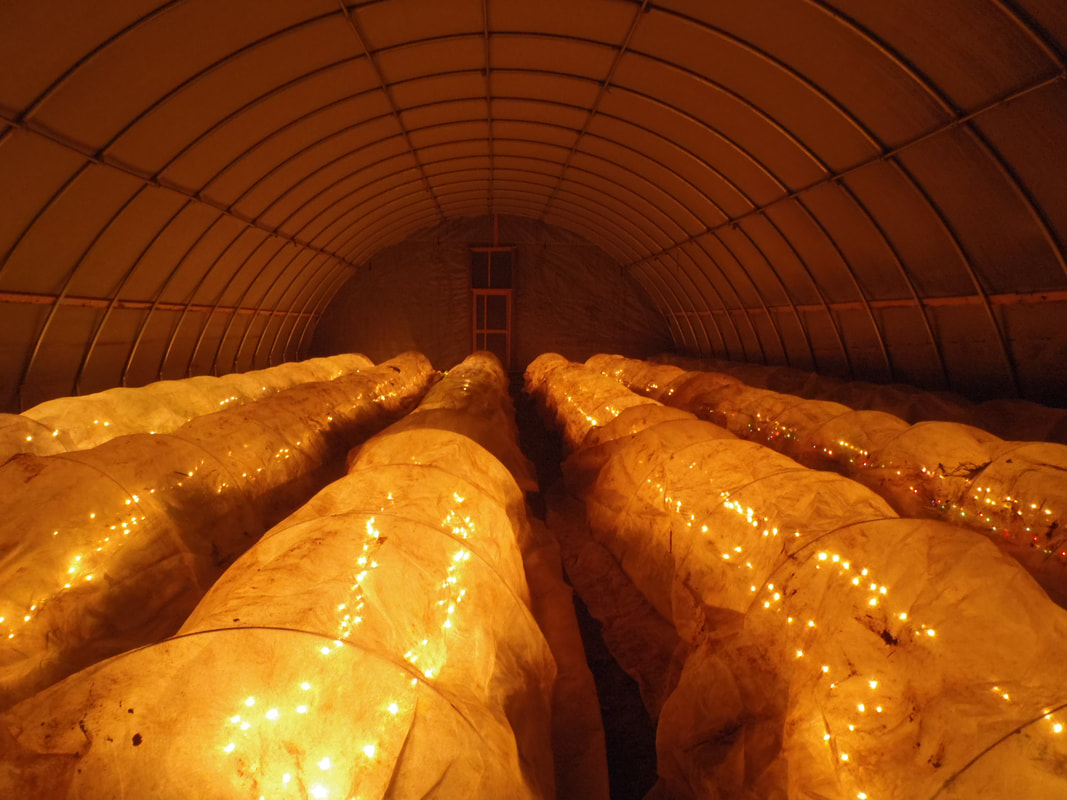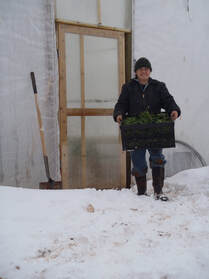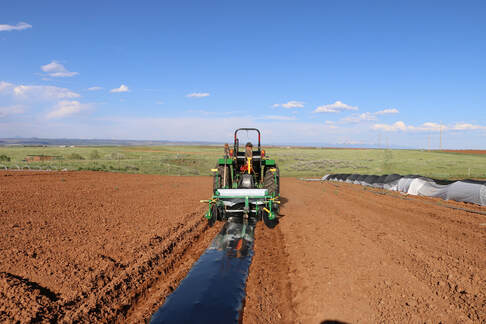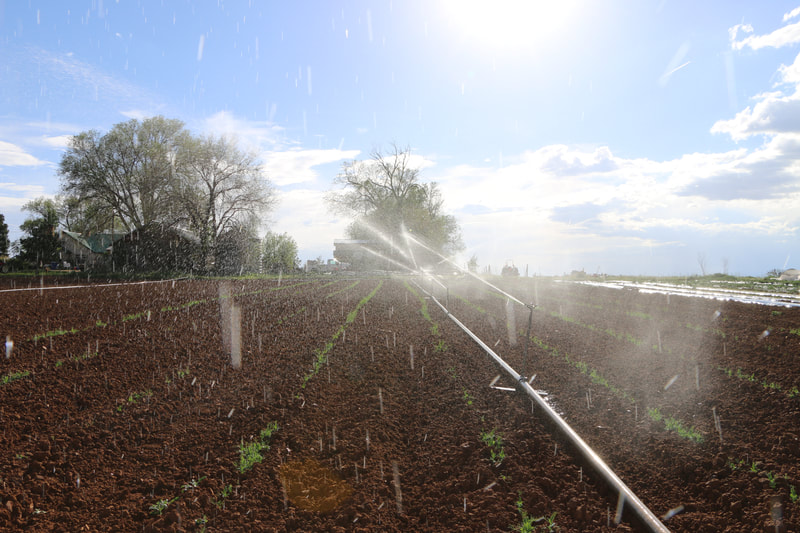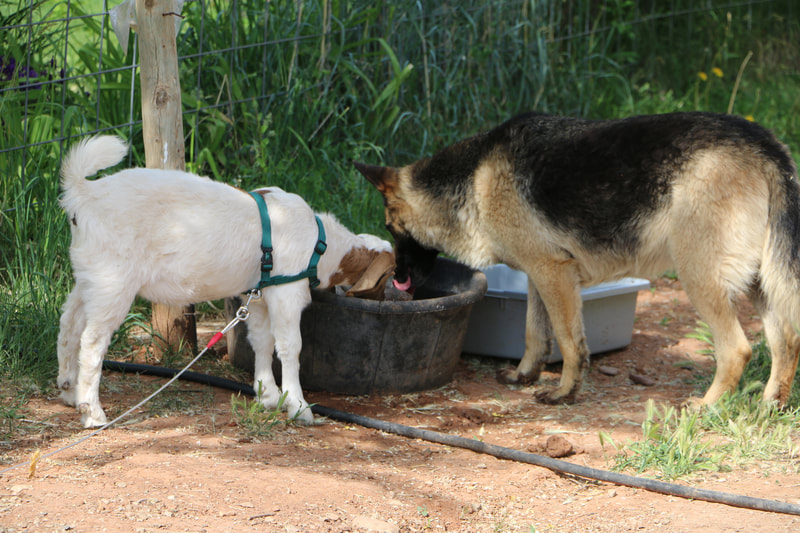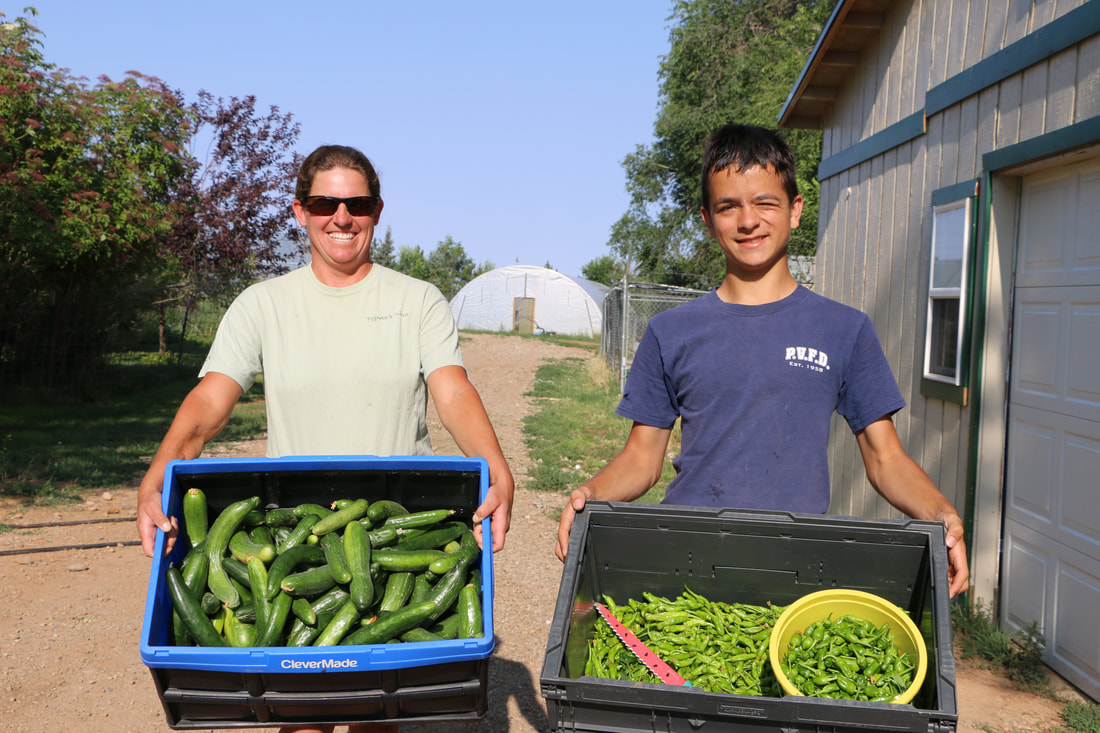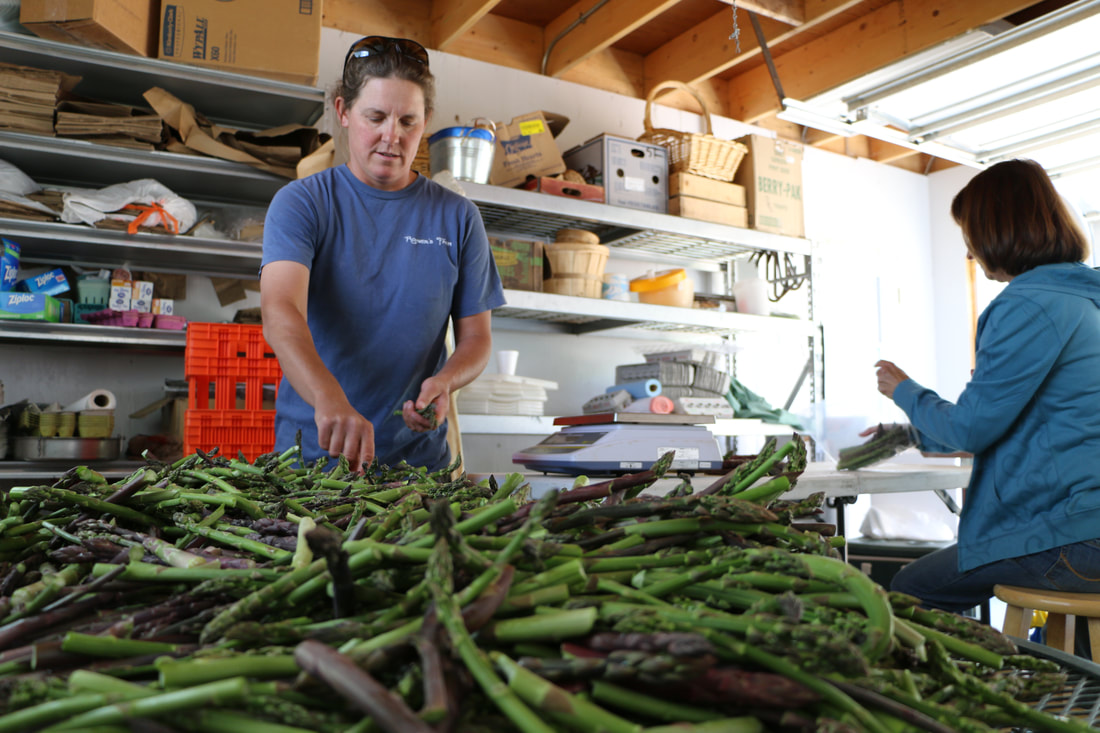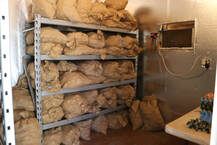Seed StartingEvery year we begin our season off with seed ordering in January and eventually seed starting by the end of the month or the beginning of February. We start 95% of all seasonal plants grown for food production on the farm. With our seedling house and small tunnel for getting plants up and growing, we always have extra plants for sale at the first part of the market. Using mostly heirloom and open pollinated varieties we are able to save a lot of our own seed which makes the plants better able to cope with the extreme climate here and establish better.
|
Greenhouse Growing
Along with growing in the field we also use high tunnels to extend our growing season. We start planting the spring crops in February so we can have greens and carrots at the first of the season. With our three high tunnels we are able to rotate crops on a three year schedule thereby keeping disease and pest pressure down. In spring one high tunnel is dedicated to early green crops, in the other high tunnels we grow eggplant, cucumbers, bell peppers, super hot peppers, zucchini, okra, jicamas and sweet potatoes. Come fall we are back to planting greens in two high tunnels for fall and winter production. We use frost blankets and Christmas lights to keeps greens growing all winter long. The high tunnels add variety and a much longer growing season for us.
FIELD OperationsWe grow a large variety of vegetables and fruit in our seven acre field. Starting as soon as the soil can be worked we lay out rows covered with black plastic mulch. The mulch helps retain moisture in the ground and keeps weed, disease and pest pressure down. The added warmth the black mulch adds to the soil really helps in our colder springs and early summers. We begin transplanting come April with cooler crops while warmer season crops go in at the first of May. We also direct seed a lot of summer crops. Low tunnels and other season extensions help get our crops up and growing quickly and help extend the season for those longer season crops. We use mechanical weeding and elbow grease at the back end of a hoe to keep most of the weeds in check (a never ending battle...). Unused space in the garden gets planted into cover crops to help soil structure and erosion.
|
water and the farm
Water is the lifeline of the farm. We water using water from the Dolores Water Conservation which comes from the Dolores River out of McPhee Reservoir. We use a variety of irrigation methods but the majority of our veggie production is watered using drip lines. This method helps us to conserve water making it possible for us to water twenty two acres with our allotment for eleven acres. Because of our soils we do have to rotate drip systems with overhead watering throughout the years, but as we rotate crops on a regular basis this is worked into our rotation.
Harvesting, Packaging and food storage
Harvesting happens nearly continually here at the farm, from the first asparagus coming up in the spring along with the greens and carrots, to the first of the raspberries of summer. Afterwards comes the summer crops like shishitos and eggplant along with tomatoes. We end the season with bringing in the winter squash, picking the apples and digging the potatoes. Every season we make use of our cold storage system to keep our vegetables and fruit as fresh as possible. Attached to our washing and packaging house our cold storage uses just a standard air conditioner hooked up to the CoolBot unit which fools the cooler into running colder than a traditional cooler. Our washing and packaging house is equipped with stainless steel sinks and tables that make keeping it clean and sterile a breeze. We have several sinks so we can do a triple rinse on greens and are able to quickly put vegetables back into the cooler to keep them fresh. All of our washing and packaging happen in the wash house.

